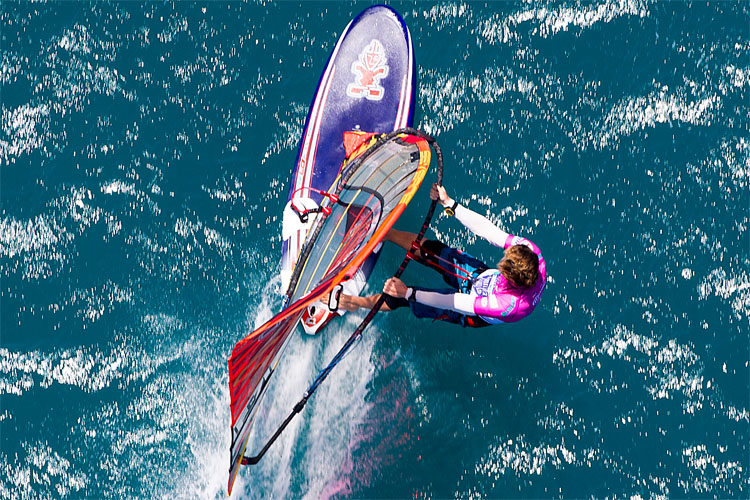The harness allows a windsurfer to get planing and transfers the force of the wind away from your arms to the body. Learn how to sail for hours without aching muscles.
Harnessing is the last and most important windsurfing technique for the beginner level. The need for a harness typically occurs when winds reach Force 3 (7-10 knots).
A harness is a leverage tool that balances the wind in your sail and the weight of your body.
Harnesses have hooks that allow you to hang from the lines attached to the boom.
When you hook in, you take the load off your arms by using your body weight. As a result, your arms are only used to steer and make adjustments to the rig.
There are several types of windsurfing harnesses - chest harnesses, waist harnesses, and seat harnesses.
The best harness model is always the one you feel most comfortable with in strong wind conditions.
Traditionally, beginner windsurfers prefer chest harnesses to start planing, upwind, and on a close reach.
As you progress, you will find that waist harnesses are the ideal choice for the average sailor who has already mastered the 7-shape stance.
As a rule of thumb, remember not to place your harness lines too far forward or backward.
Their length depends on your arm's length. So, ideally, your arms should be straight when you're hooked in and holding the boom.
For a five-meter rig, count five hands down the front of the boom for the front line.
You can also adjust the width of the harness lines so that you find a good balance and stance. Therefore, the front line should be about a fist apart from the back line.
When you put the harness on, make sure the spreader bar is pulled tight to the body and doesn't move.
Hooking Into the Harness Lines 101
Let's learn how to sail with a harness:
- Start sailing slightly closer to the wind than on a beam reach;
- Position the feet to trim the board flat;
- Extend the front leg and bend the back leg;
- Extend the front arm;
- Drop down into a 7-stance and pull in, back, and down on the boom;
- Bring the harness line towards you;
- Pull the boom towards you, swing the harness line towards you, and lift the hips;
- Hook in and relax the arms;
- Hold the rig and sit down in the harness;
- Sheet in and get planing;
To unhook, pull the boom towards you again, and the harness line will drop out of the hook. Remember that you need to unhook before jibing or tacking.
Harnesses make windsurfing at high speeds easy.
If you can't get near the harness line, it is because the lines are too short or you're sailing too far downwind and sheeted out.
However, be prepared to make constant adjustments to your hands and feet while cruising.
If you feel you're losing control of the rig in stronger wind conditions, unhook it as quickly as you can to avoid being catapulted.
